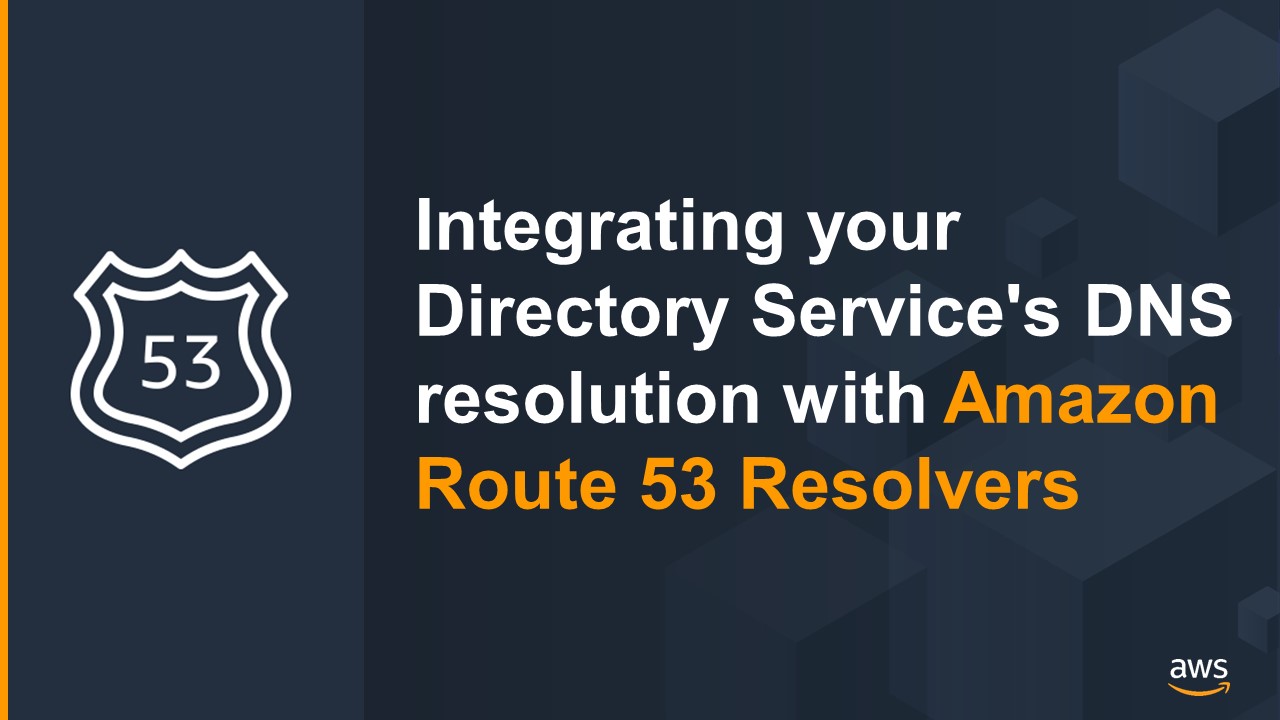Networking & Content Delivery
Tag: Route 53
How to optimize DNS for dual-stack networks
Public IPv4 addresses have been a scarce resource going all the way back to 2011, when the Internet Assigned Numbers Authority (IANA) distributed the last block of unallocated public IPv4 addresses. Alongside, the private IPv4 range carved out by RFC1918 has also been too small for large networks and deployments, like containers that consume a […]
Integrating your Directory Service’s DNS resolution with Amazon Route 53 Resolvers
There are times when your client systems must resolve a Microsoft Active Directory’s Fully Qualified Domain Name (FQDN) before they can join a domain. Each VPC in your AWS environment is provisioned with a DNS resolver powered by Amazon Route 53. We call this an AmazonProvidedDNS. This resolver runs on the second IPv4 address from […]
Moving towards DevOps CI/CD approach to configure and manage AWS networking resources
Introduction Organizations are moving from traditional monolithic data center networks to an agile application programming interface (API) driven cloud network. As a result, customers are looking for an efficient and reliable way to make changes to their cloud network infrastructure. They want to adopt a pipeline driven approach to make any network changes following DevOps […]
Configuring DNSSEC signing and validation with Amazon Route 53
AWS now supports DNS Security Extensions (DNSSEC) signing on public zones for Amazon Route 53 and validation for Amazon Route 53 Resolver. DNSSEC is a specification that provides data integrity assurance for DNS and helps customers meet compliance mandates (for example, FedRAMP and security standards such as NIST). When you enable DNSSEC signing for a […]
Performing Route 53 health checks on private resources in a VPC with AWS Lambda and Amazon CloudWatch
If you have ever used Amazon Route 53 health checks to monitor resources, you know that monitored resources must have public IP addresses. This is because Route 53 health checkers are public and they can only monitor hosts with IP addresses that are publicly routable on the internet. You may want to monitor your resources […]
Centralized DNS management of hybrid cloud with Amazon Route 53 and AWS Transit Gateway
A successful hybrid networking strategy goes beyond private network connectivity. It often requires dealing with independent internal zones both in Amazon Virtual Private Cloud (Amazon VPC) and on-premises. Such a strategy needs Domain Name System (DNS) naming that spans the entire network. Typically, this is managed by providing name resolution services in the same place […]





